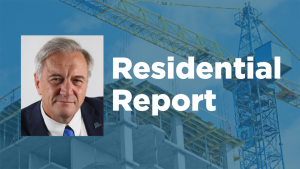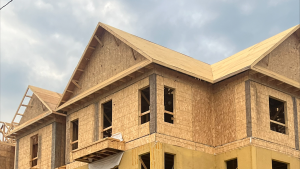Governments must streamline the development approvals process, while the building industry needs to adopt innovative technologies in order to spur construction of more new housing.
Those were two of the ideas suggested during a panel discussion on housing innovation and technology that was part of an event held recently at York University to celebrate the fifth anniversary of AECO Innovation Lab.
“We have this magnificent opportunity now,” explained panellist Richard Lyall, president of the Residential ������ion Council of Ontario (RESCON). “We have a prime minister now that is a technocrat and he has a vision — and one of those visions is to change how we do things fundamentally, especially in real estate and development and housing that are important.
“You cannot build an advanced economy without housing and the right kind of housing. We’re behind in that regard by any number of metrics. So, there is a massive opportunity here.”
The event was attended by leaders from government, research and the construction industry to mark AECO’s milestone and innovation in housing and property technology and unveil what’s next for the future of housing advancement in Ontario. More than 100 people attended.
According to Lyall, Canada has a long history of innovation and change but because the country is the richest nation on the planet with untold resources, the nation has become a little lax.
“We have the best piece of real estate on the planet,” he said. “We’ve got the best people on the planet. We have the right values, which is very, very important in terms of how we treat people…We’re a global community and that’s our strength.”
Change is going to happen because the need for housing has reached a breaking point, and there has been a convergence of technologies over the past few years that will help, said Lyall.
However, someone must lead the way and AECO is in the best position to make that change happen, he noted.
“The bottom line is you need leadership. As my dad always told me, ‘You don’t see any statues of committees around the world.’ They’re usually individuals. You need the leadership, and you need the money, and you need systems that work. I think we have a convergence of that.”
Sherry Larjani, president at Spotlight Development Inc., said projects often get stuck at the approvals stage, so technology instead of humans should be used to speed up development applications.
“We have projects that are stuck in the pipeline,” she said. “There are projects that are not moving forward because of humans, because they decide that something shouldn’t move ahead or something shouldn’t get approved, or something shouldn’t be done.”
If the approvals process is not streamlined and speeded up “we are going to be stuck because that is really the bottleneck,” she said.
Nathaniel Baum-Snow, associate professor at the University of Toronto – Rotman School of Management, said construction is the only industry that is less productive now than it was 30 years ago.
“It’s more expensive to build a unit of housing,” he told the audience. “You need more workers. It’s a real challenge and so that means that the construction industry is really ripe for innovation.”
One problem, he noted, is that the regulatory environment is so different in every jurisdiction in Canada.
“I think, we have some real potential as a result. But we’ve got to keep in mind that there’s a lot of very strong vested interests at the local level that are trying to keep us from building anything.”
From a policy standpoint, he said it must be made clear that everybody is in the situation together and must do their part.
Peyvand Melati, an entrepreneur and CEO at QEA Tech, said in addition to proper funding, grit, persistence and fortitude are needed to make inroads as is the ability to quickly pivot.
Judging by the accomplishments of AECO over the past five years, he said, it appears the team has the ability and resolve. However, he cautioned while the industry has the appetite to evolve, there can be a lot of red tape and politics that prevent change from happening.
Lyall said there’s a lot happening with the Protect Ontario by Building Faster and Smarter Act that was passed as it will standardize development charges levied by municipalities.
The changes permit developers to remit DC payments when a dwelling is occupied, rather than when a building permit is issued.
Meanwhile, the feds have taken an interest in modular construction, pledging to provide $25 billion in debt financing and $1 billion in equity financing to Canadian prefabricated home builders.
“There’s a lot there,” said Lyall. “There’s the potential for enormous mistakes to be made there because it’s not well understood, so we want to be part of that conversation and help this government get that started. They want to go there but they’ve got to go there in the right way.”








Recent Comments
comments for this post are closed